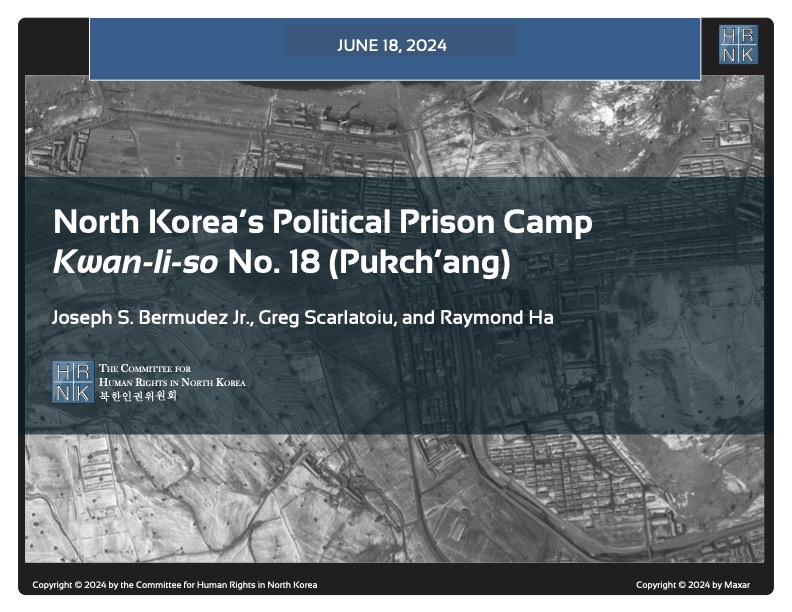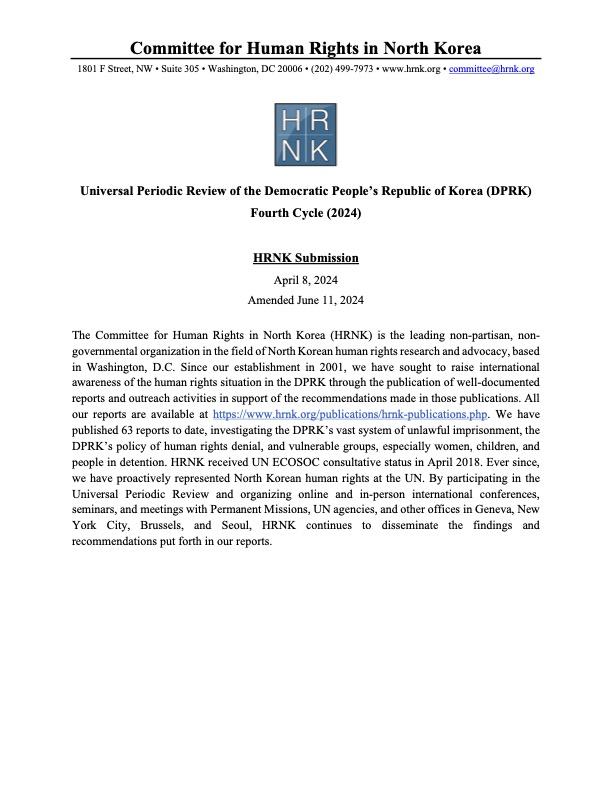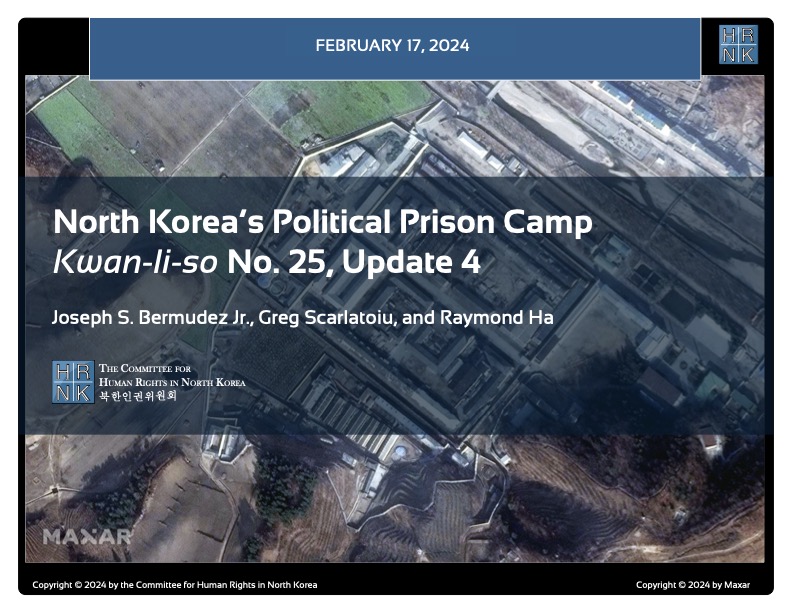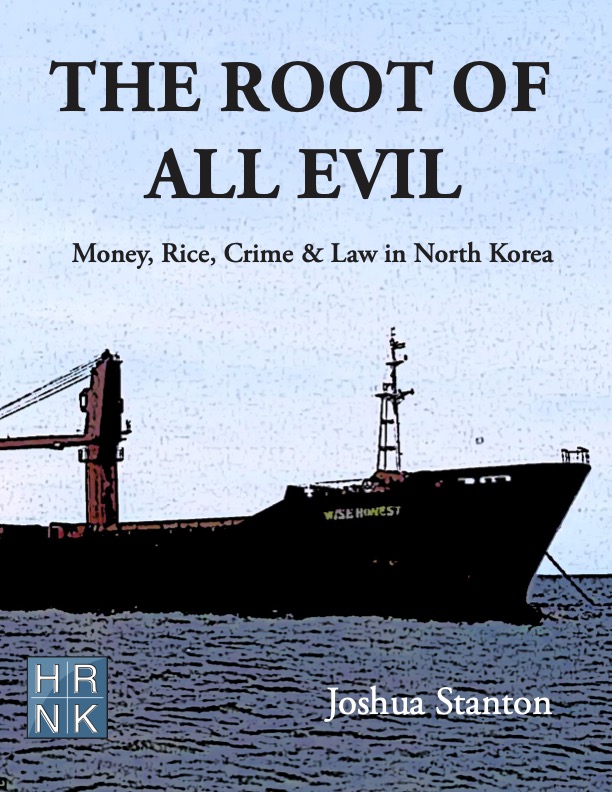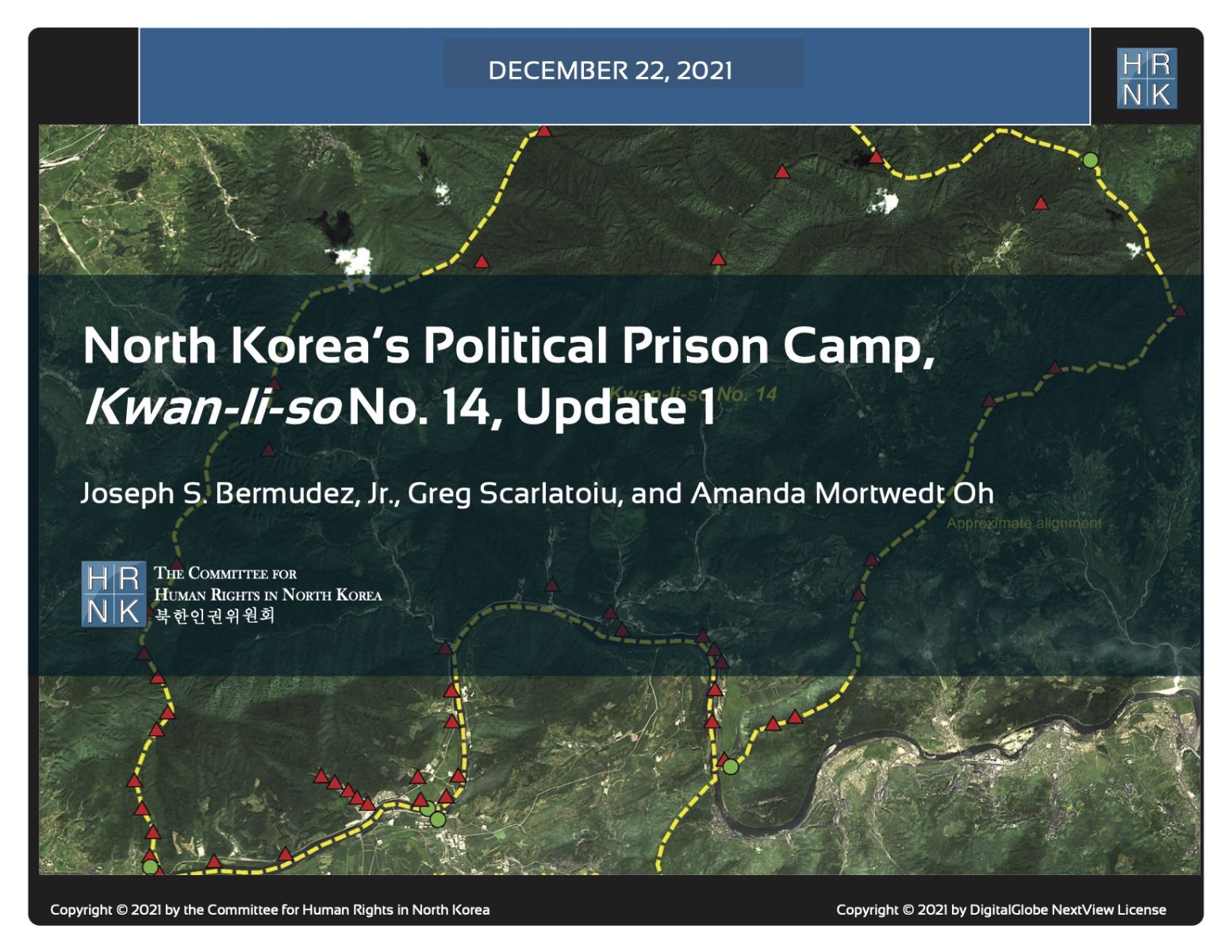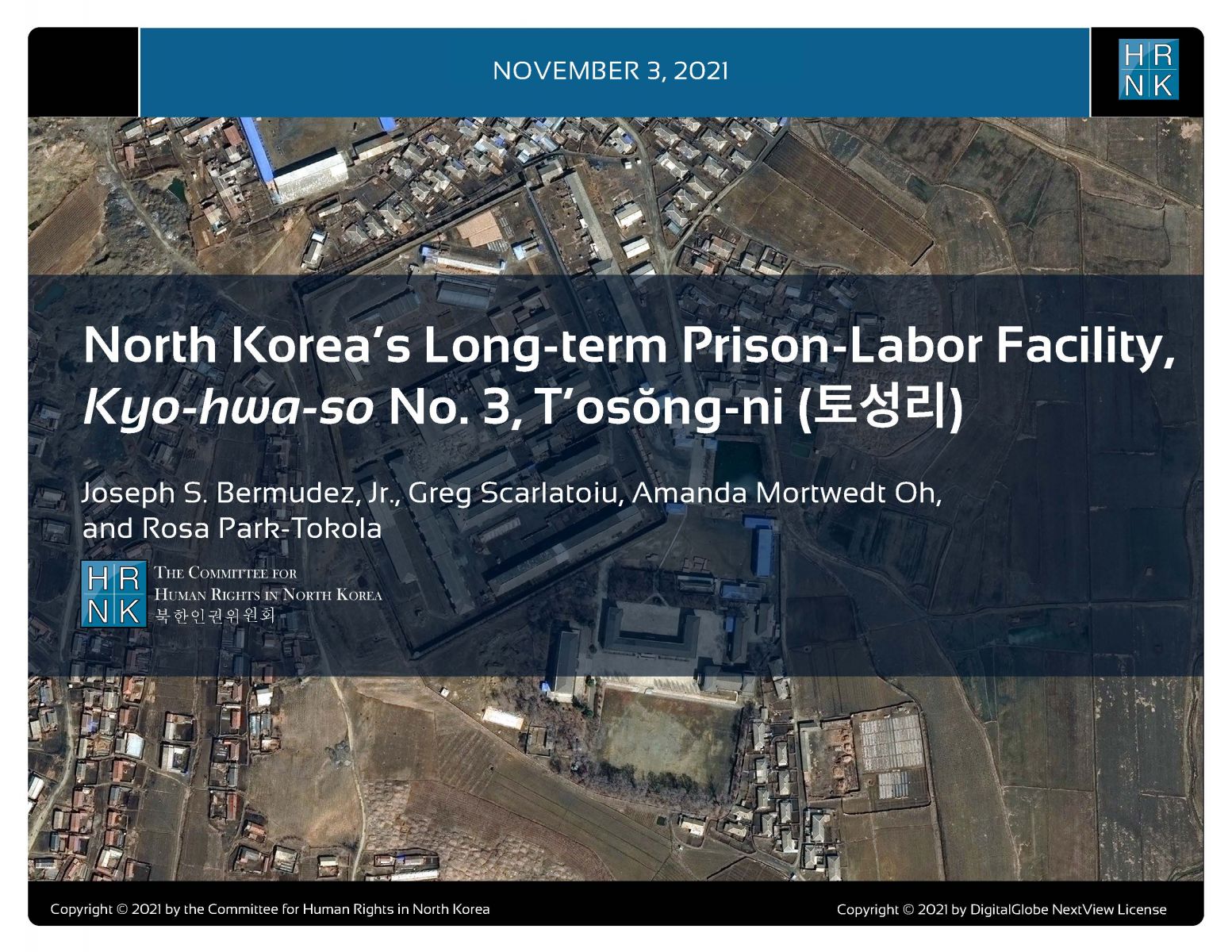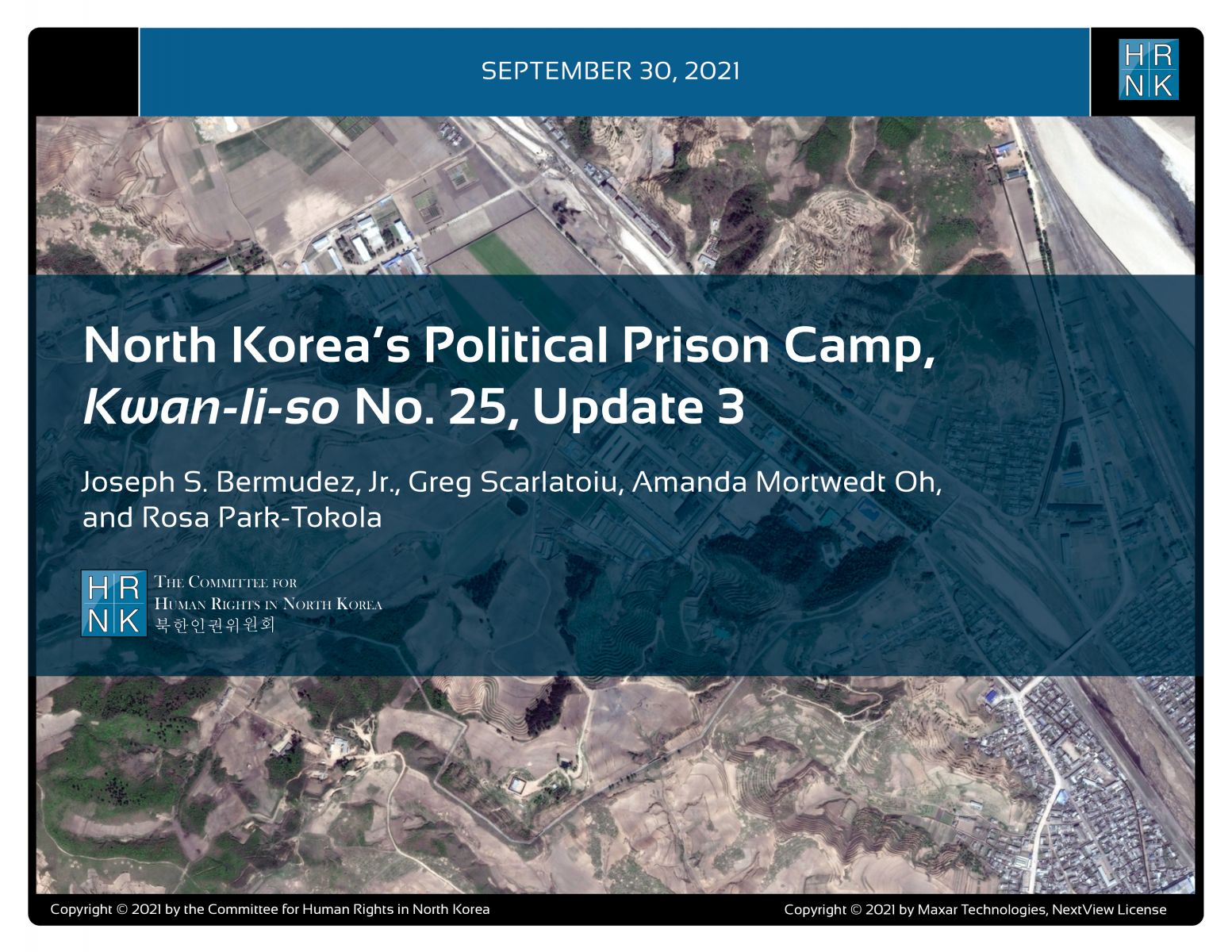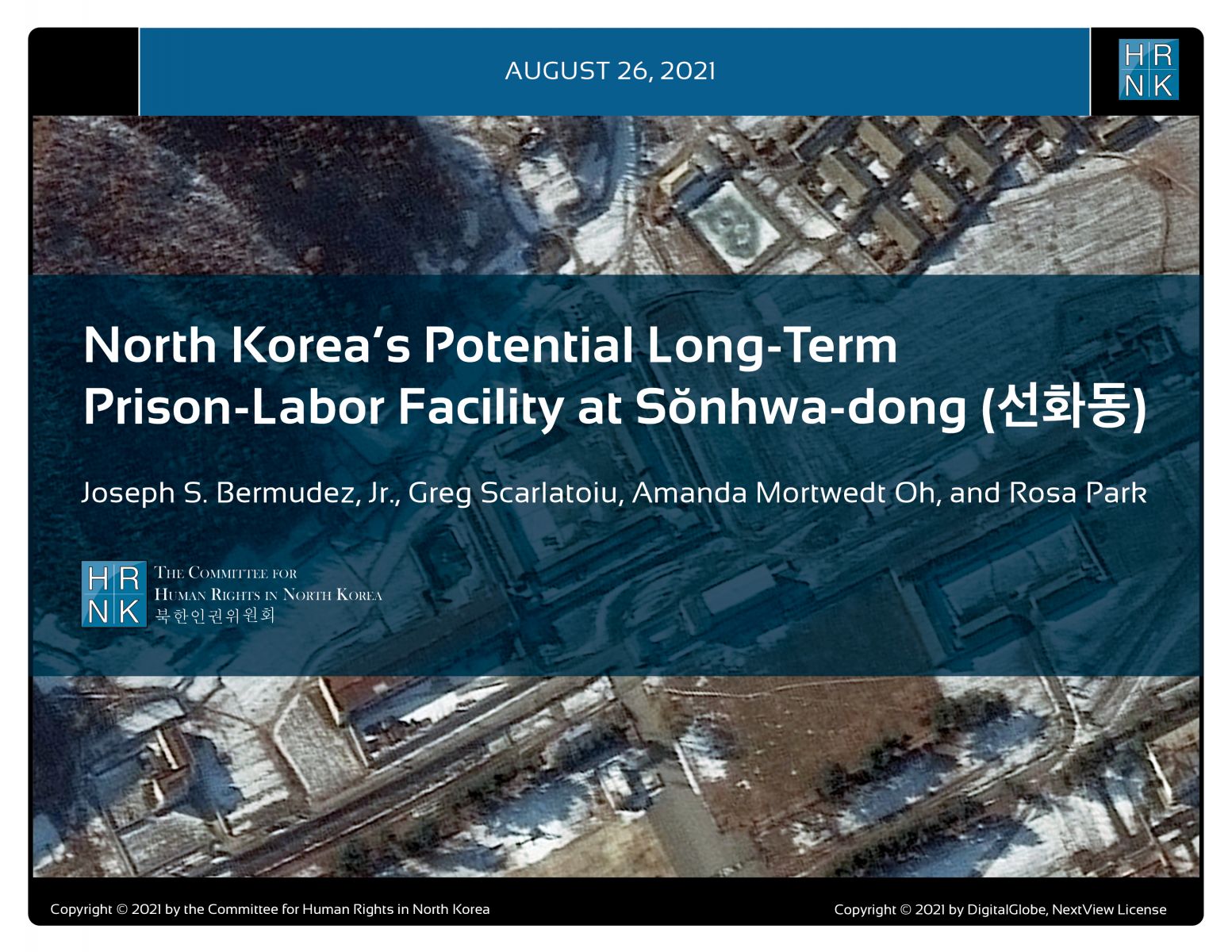A 5.2 km Switchback Road Could be Used to Transfer Prison Labor from the Camp to the Nuclear Test Facility: The Switchback, Possible Hard Evidence of the North Korean Security-Human Rights Nexus
EMBARGOED UNTIL 12:01 AM U.S. EASTERN TIME, TUESDAY, OCTOBER 17
THE REPORT ROLLOUT IS ON-THE-RECORD
The report, Switchback: Evidence of a Connection between Kwan-li-so No. 16 and the Punggye-ri Nuclear Test Facility? is available on HRNK’s website: https://www.hrnk.org/uploads/pdfs/punggyeri_FINAL.pdf
The report rollout will be conducted via Zoom at 10:00 a.m. U.S. Eastern Time on Tuesday, October 17. Please contact [email protected] for the Zoom link.
WASHINGTON, D.C., October 17, 2023. The Committee for Human Rights in North Korea (HRNK), a non-governmental organization based in Washington, D.C., has launched a report entitled Switchback: Evidence of a Connection between Kwan-li-so No. 16 and the Punggye-ri Nuclear Test Facility?
Political Prison Camp No. 16 (a.k.a. Kwan-li-so No. 16, Hwasong) is located approximately 1.5 km east of the Punggye-ri nuclear testing area. The estimated Camp 16 prisoner population is at least 20,000. The Punggye-ri Nuclear Test Facility, North Korea’s only known nuclear test site, is located 17.2 km north of the village of Punggye-ri, North Hamgyong Province, on the southern slopes of Mant’ap-san (Mount Mant’ap).
For this report, HRNK author Jacob Bogle analyzed thirty-four high-resolution commercial satellite images, including pan-sharpened multispectral and pan-chromatic images of Camp 16 and the Punggye-ri nuclear testing area.
Raymond Ha, HRNK Director of Operations & Research and report co-author, points out: “Nearly eighty years after Allied air forces took aerial photographs of Auschwitz-Birkenau, satellite imagery plays a critical role in documenting and understanding the core of the Kim Jong-un regime's crimes against humanity: its political prison camps (kwan-li-so).”
According to Ha, “although the regime denies the existence of political prison camps, HRNK has accumulated objective, visual evidence of the continued operation of these facilities through satellite imagery analysis for two decades.”
Greg Scarlatoiu, HRNK Executive Director and report co-author, recalls: “The report is the 24th HRNK satellite imagery analysis publication and the latest step in an effort by HRNK to create a clear picture of the evolution, current state, function, economic and security utility of North Korea’s political prison camps and other detention facilities.”
HRNK is the NGO that put North Korea’s penal labor colonies on the map in 2003 by publishing world-renowned investigator David Hawk’s Hidden Gulag. Hidden Gulag was the first report ever to use satellite imagery to scrutinize North Korea’s vast system of unlawful imprisonment. Ever since, HRNK has employed a methodology combining satellite imagery analysis, North Korean escapee testimony, and open-source information.
Following up on reports by the Chosun Ilbo (June 2009) and Daily NK (January 2016), HRNK examined satellite imagery of a dirt or gravel switchback road that runs for a total length of 5.2 km from Testing Tunnel No. 1 to the perimeter of Camp 16. While the earliest available satellite imagery of Camp 16 is from 1983, the earliest available commercial satellite imagery of the switchback road dates to 2005. Construction of the nuclear testing facility began in the early 2000s.
The dirt or gravel switchback provides a much shorter alternative to using the region’s established road network to travel from Camp 16 to the nuclear testing facility, which would involve a journey of over 80 km. Thus, the likelihood that the switchback may be used for foot traffic appears to be high.
Author Jacob Bogle identifies four possible uses for the switchback: transporting prisoners from Camp 16 to the nuclear testing area for forced labor; providing shorter access to place equipment to monitor the underground nuclear tests; assessing the suitability of the area’s geology for underground nuclear tests and the drilling of tunnels, during the initial planning and construction states of the nuclear testing facility; and securing access for Punggye-ri security personnel to conduct security patrols and surveillance of the area.
Jacob Bogle points out: “Although unassuming at first, the Punggye-ri switchback presents several possibilities that rest at the nexus of human rights in North Korea and their nuclear program. Whether used for prisoner transport in forced labor projects or as part of planning and designing the underground test site, this dirt road carries the possibility to unlock a deeper understanding of two of North Korea's most challenging topics.”
Bogle further adds: “It's often easy to think of the people of North Korea in abstract terms, but this switchback, wedged between North Korea's nuclear test facility and one of its least understood prison camps, offers an opportunity to consider the realities of life faced by the very real people who may have been marched along it.”
Raymond Ha considers that the report “shows evidence of a physical connection between the Punggye-ri nuclear test site and Kwan-li-so No. 16,” thus demonstrating “that the dismantling of North Korea’s nuclear program will also require the complete, verifiable, and irreversible dismantling (CVID) of its political prison camps.”
According to Jacob Bogle, when the switchback is “placed within the context of North Korea’s nuclear program and its proximity to the Hwasong Kwan-li-so is considered, the importance of needing to understand its precise role becomes clear.”
Greg Scarlatoiu believes that “further investigation of the switchback, ideally involving sources inside North Korea, will reinforce the need for a paradigm shift in North Korea policy, that requires a deeper understanding of the security-human rights nexus.”
According to Scarlatoiu, “to develop its nuclear program, North Korea abuses and exploits its people at home and abroad.” If used for the transportation of prisoners to the nuclear testing site as slave laborers, the switchback will provide evidence of a brutally direct link between North Korea’s political detention system and its nuclear program.
While emphasizing that the North Korean regime is skilled at deploying Camouflage, Concealment and Decoys (CCD), Scarlatoiu adds that “CVID is impossible without access to the political prison camps and other detention facilities, as parts, components, and equipment can be concealed within the perimeter of these off-limits detention facilities whose existence North Korea denies.”
RELEASE DETAILS
The report rollout and presentation by Jacob Bogle will be held via Zoom virtual conference, from 10:00 a.m. to 11:00 a.m. Eastern Standard Time (EST), on Tuesday, October 17. ROK Ambassador-at-Large for International Cooperation on North Korean Human Rights Shin-wha Lee will give remarks as a special guest. Report co-author and HRNK Director of Operations & Research Raymond Ha will be the discussant. Report co-author and HRNK Executive Director Greg Scarlatoiu will moderate.
If you are unable to participate, a video recording will be made available on HRNK’s YouTube channel after the event.
THE REPORT IS EMBARGOED UNTIL 12:01 AM US EASTERN TIME, TUESDAY, OCTOBER 17. THE REPORT RELEASE IS ON-THE-RECORD.
For media inquiries, please contact Greg Scarlatoiu, Executive Director, at [email protected] (+1-202-499-7973).
HRNK was founded in 2001 as a nonprofit research organization dedicated to documenting human rights conditions in the Democratic People’s Republic of Korea (DPRK), as North Korea is formally known. Visit www.hrnk.org to find out more.
This is the first satellite imagery report by HRNK on a long-term political prison commonly identified by researchers and former detainees as Kwan-li-so No. 18 (Pukch'ang).
This report was concurrently published on Tearline at https://www.tearline.mil/public_page/prison-camp-18.
To understand the challenges faced by the personnel who are involved in North Korea’s nuclear program, it is crucial to understand the recruitment, education, and training processes through the lens of human rights. This report offers a starting point toward that understanding.
North Korea’s scientists and engineers are forced to work on the nuclear weapons program regardless of their own interests, preferences, or aspirations. These individuals may be described as “moder
In this submission, HRNK focuses its attention on the following issues in the DPRK:
- The status of the system of detention facilities, where a multitude of human rights violations are ongoing.
- The post-COVID human security and human rights status of North Korean women, with particular attention to sexual and gender-based violence (SGBV).
- The issue of Japanese abductees and South Korean prisoners of war (POWs), abductees, and unjust detainees.
This report provides an abbreviated update to our previous reports on a long-term political prison commonly identified by former prisoners and researchers as Kwan-li-so No. 25 by providing details of activity observed during 2021–2023.
This report was originally published on Tearline at https://www.tearline.mil/public_page/prison-camp-25.
This report explains how the Kim regime organizes and implements its policy of human rights denial using the Propaganda and Agitation Department (PAD) to preserve and strengthen its monolithic system of control. The report also provides detailed background on the history of the PAD, as well as a human terrain map that details present and past PAD leadership.
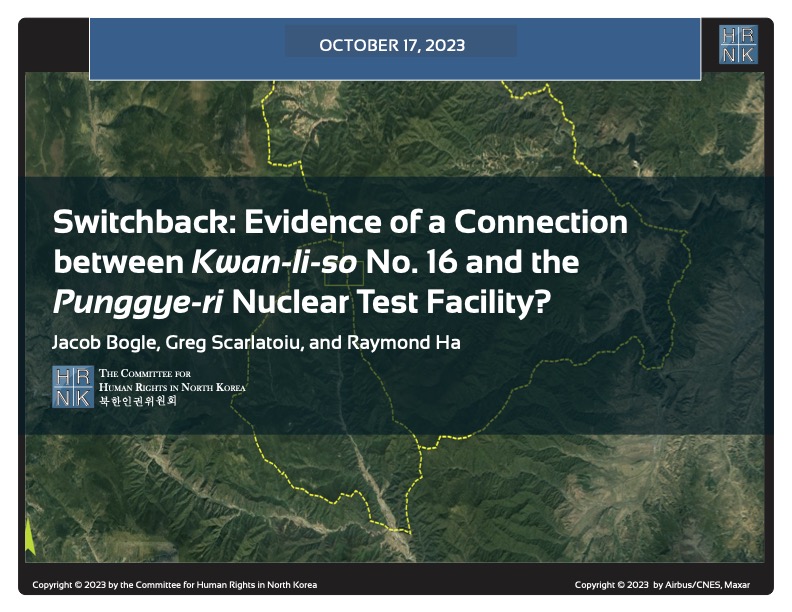
HRNK's latest satellite imagery report analyzes a 5.2 km-long switchback road, visible in commercial satellite imagery, that runs from Testing Tunnel No. 1 at North Korea's Punggye-ri nuclear test facility to the perimeter of Kwan-li-so (political prison camp) no. 16.
This report proposes a long-term, multilateral legal strategy, using existing United Nations resolutions and conventions, and U.S. statutes that are either codified or proposed in appended model legislation, to find, freeze, forfeit, and deposit the proceeds of the North Korean government's kleptocracy into international escrow. These funds would be available for limited, case-by-case disbursements to provide food and medical care for poor North Koreans, and--contingent upon Pyongyang's progress
For thirty years, U.S. North Korea policy have sacrificed human rights for the sake of addressing nuclear weapons. Both the North Korean nuclear and missile programs have thrived. Sidelining human rights to appease the North Korean regime is not the answer, but a fundamental flaw in U.S. policy.
(Published by the National Institute for Public Policy)
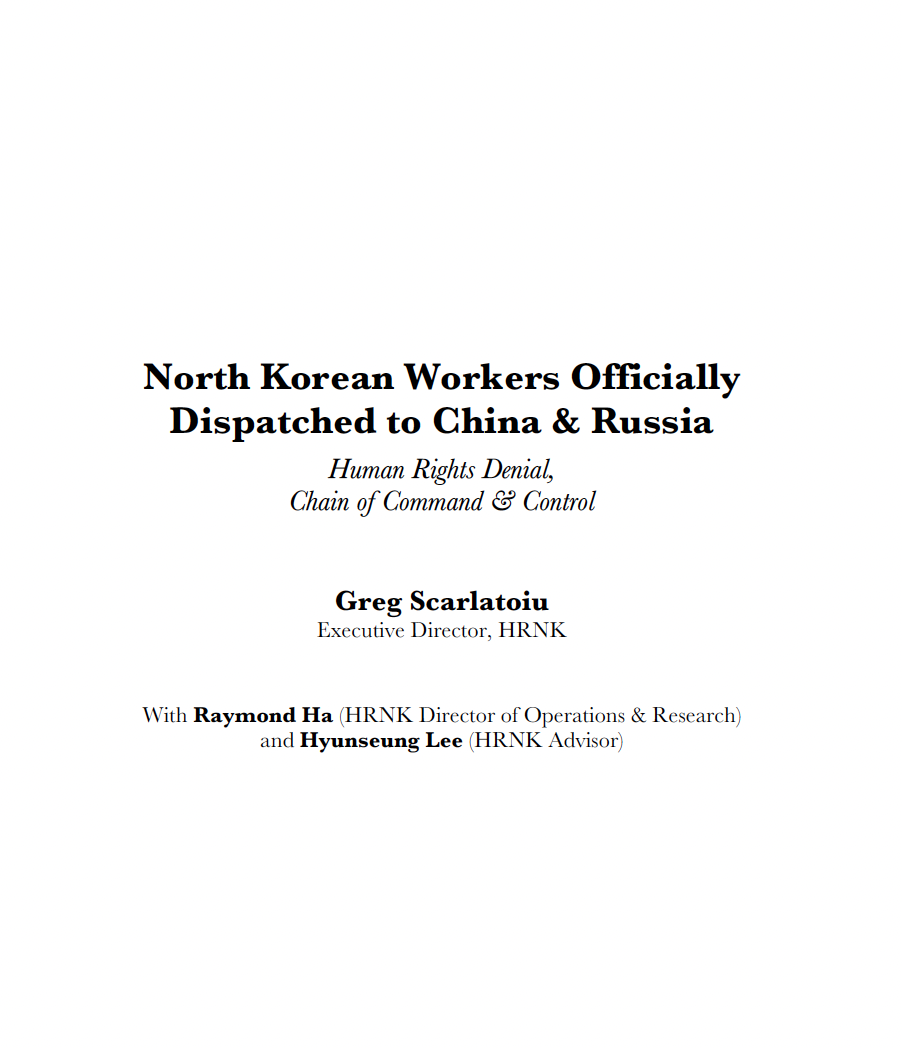
North Korea’s forced labor enterprise and its state sponsorship of human trafficking certainly continued until the onset of the COVID pandemic. HRNK has endeavored to determine if North Korean entities responsible for exporting workers to China and Russia continued their activities under COVID as well.
George Hutchinson's The Suryong, the Soldier, and Information in the KPA is the second of three building blocks of a multi-year HRNK project to examine North Korea's information environment. Hutchinson's thoroughly researched and sourced report addresses the circulation of information within the Korean People's Army (KPA). Understanding how KPA soldiers receive their information is needed to prepare information campaigns while taking into account all possible contingenc
This report is part of a comprehensive long-term project undertaken by HRNK to use satellite imagery and former prisoner interviews to shed light on human suffering in North Korea by monitoring activity at political prison facilities throughout the nation. This is the second HRNK satellite imagery report detailing activity observed during 2015 to 2021 at a prison facility commonly identified by former prisoners and researchers as “Kwan-li-so No. 14 Kaech’ŏn” (39.646810, 126.117058) and
This report is part of a comprehensive long-term project undertaken by HRNK to use satellite imagery and former prisoner interviews to shed light on human suffering in North Korea by monitoring activity at civil and political prison facilities throughout the nation. This study details activity observed during 1968–1977 and 2002–2021 at a prison facility commonly identified by former prisoners and researchers as "Kyo-hwa-so No. 3, T'osŏng-ni" and endeavors to e
This report is part of a comprehensive long-term project undertaken by HRNK to use satellite imagery and former detainee interviews to shed light on human suffering in the Democratic People’s Republic of Korea (DPRK, more commonly known as North Korea) by monitoring activity at political prison facilities throughout the nation. This report provides an abbreviated update to our previous reports on a long-term political prison commonly identified by former prisoners and researchers as Kwan-li-so<
Through satellite imagery analysis and witness testimony, HRNK has identified a previously unknown potential kyo-hwa-so long-term prison-labor facility at Sŏnhwa-dong (선화동) P’ihyŏn-gun, P’yŏngan-bukto, North Korea. While this facility appears to be operational and well maintained, further imagery analysis and witness testimony collection will be necessary in order to irrefutably confirm that Sŏnhwa-dong is a kyo-hwa-so.
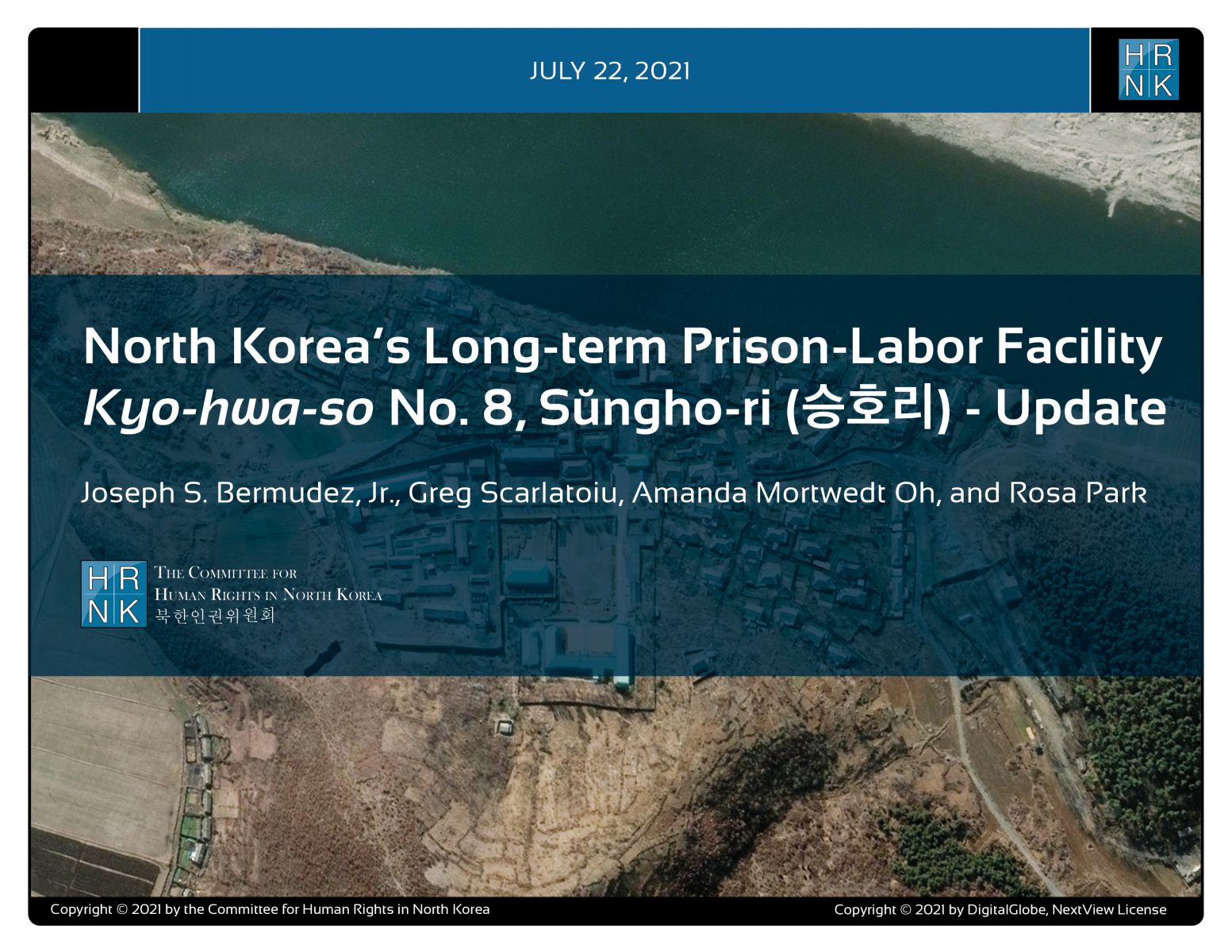
"North Korea’s Long-term Prison-Labor Facility Kyo-hwa-so No. 8, Sŭngho-ri (승호리) - Update" is the latest report under a long-term project employing satellite imagery analysis and former political prisoner testimony to shed light on human suffering in North Korea's prison camps.
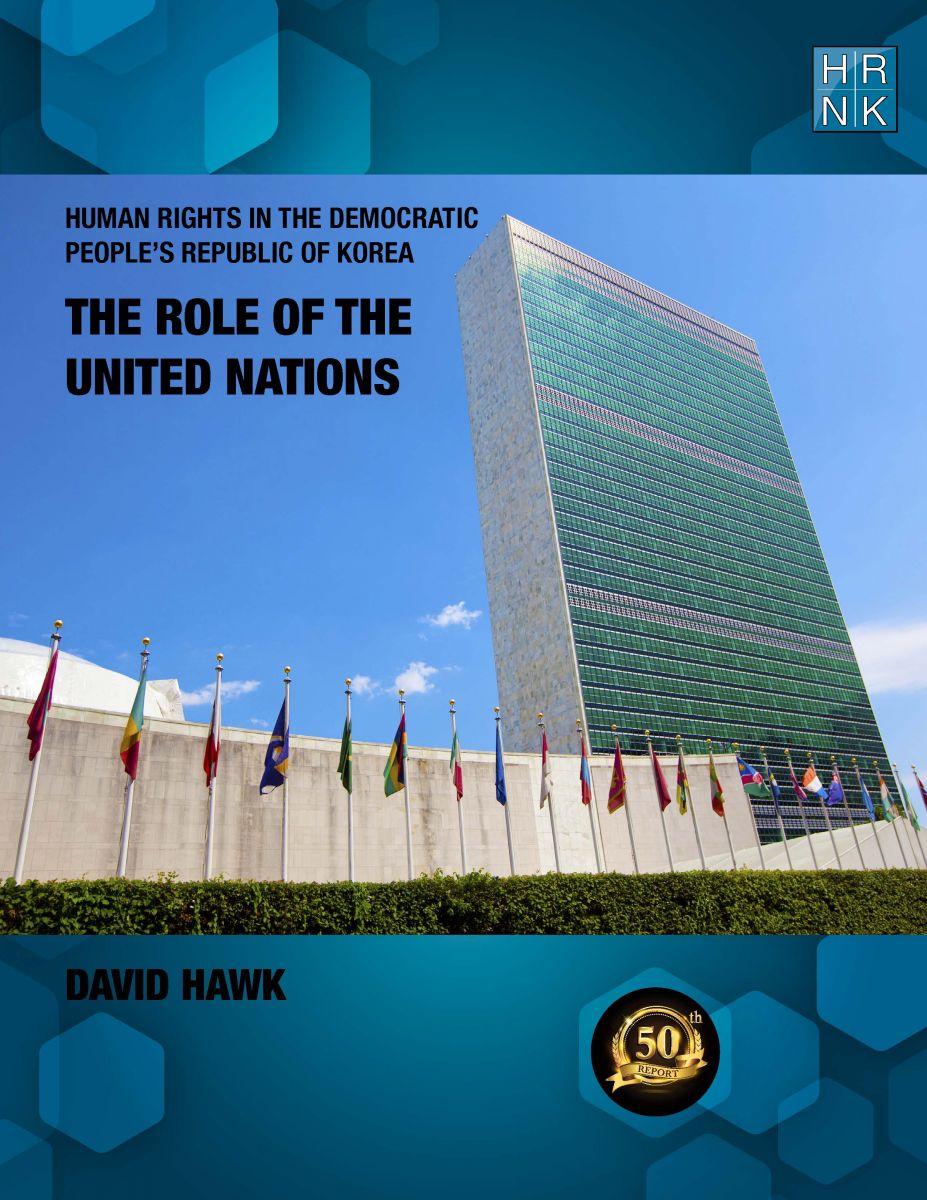
Human Rights in the Democratic Republic of Korea: The Role of the United Nations" is HRNK's 50th report in our 20-year history. This is even more meaningful as David Hawk's "Hidden Gulag" (2003) was the first report published by HRNK. In his latest report, Hawk details efforts by many UN member states and by the UN’s committees, projects and procedures to promote and protect human rights in the DPRK. The report highlights North Korea’s shifts in its approach
South Africa’s Apartheid and North Korea’s Songbun: Parallels in Crimes against Humanity by Robert Collins underlines similarities between two systematically, deliberately, and thoroughly discriminatory repressive systems. This project began with expert testimony Collins submitted as part of a joint investigation and documentation project scrutinizing human rights violations committed at North Korea’s short-term detention facilities, conducted by the Committee for Human Rights
